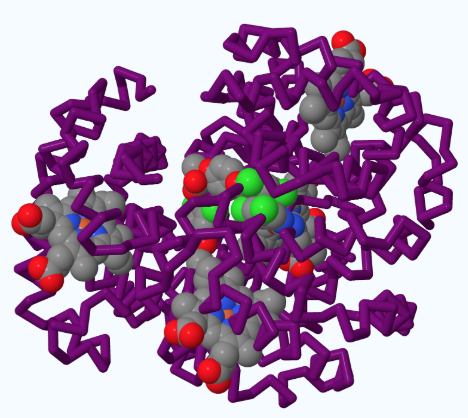Forty-five years ago, scientists J.P. Kennett and N.J. Shackleton found that deep-sea microscopic plankton (benthic foraminifera) could provide a reliable isotope record of Earth’s fluctuations in global carbon emissions, sea water composition, and deep-sea temperature [1]. Ever since, scientists have been studying these creatures to develop a comprehensive record of the major climate shifts over the last 66 million years (the Cenozoic era).
However, this record was compiled nonlinearly over the course of decades, and it lacked the completeness needed to analyze climate variability resulting from changes to Earth’s orbit. On September 10 of this year, Westerhold et al. at the University of California-Santa Cruz published a paper that detailed a more comprehensive climate record of the Cenozoic, which they developed by refining some of the previously collected isotope data, as well as collecting some of their own [2]. This record had a high enough resolution to perform analysis that was once thought impossible, providing valuable insight on the state of our climate in comparison to Earth’s orbital variations over the past 66 million years.
After compiling this comprehensive history into a dataset called CENOGRID, the team discovered important correlations between the climate’s response to orbital variations and variables such as greenhouse gas levels, global temperature, and polar ice caps. They found that Earth’s climate could be divided into four distinctive states throughout the Cenozoic: Hothouse, Warmhouse, Coolhouse, and Icehouse. Each of these states are characterized by differences in the climate’s responsiveness to astronomical occurrences (i.e. changes to Earth’s orbit that affect solar energy access) [2].
In the Hothouse and Warmhouse states, the climate tended to respond to orbital variations in a more predictable manner, whereas the Coolhouse and Icehouse periods saw a much less predictable response in the climate to astronomical changes. The cause of unpredictability is an increase in responsiveness to orbital events attributable to the existence of ice caps, as well as the lower greenhouse gas levels characteristic of the Icehouse and Cool House eras [2]. It is important to note that unpredictable responsiveness is actually beneficial to us because it means there is a buffer between astronomical changes to Earth’s orbit and climatic changes here on Earth.
So how does this bit of history relate to our problems today?
According to the study’s co-author, James Zachos, the modern trends of rising greenhouse gasses and diminishing polar ice caps means we are approaching a new Hothouse period at an alarming rate (on the scale of hundreds of years rather than millions). If we reach a Hothouse state similar to the one 50 million years ago, we will be at the mercy of eccentricity changes and have less of a barrier to astronomical events [3]. This could lead to major climatic unrest and completely alter our way of life.
To a country about to leave the Paris Climate Agreement, this record should be especially terrifying. The more steps we take away from changing our habits, the closer we are to this type of future.
References:
[1] KENNETT, J., SHACKLETON, N. Oxygen isotopic evidence for the development of the psychrosphere 38 Myr ago. Nature 260, 513–515 (1976). https://doi.org/10.1038/260513a0
[2] Westerhold, Thomas et al. “An Astronomically Dated Record of Earth’s Climate and Its Predictability over the Last 66 Million Years.” Science (American Association for the Advancement of Science) 369.6509 (2020): 1383–1387. Web.
[3] Earth barreling toward “Hothouse” state not seen in 50 million years, epic new climate record shows | Live Science https://www.livescience.com/oldest-climate-record-ever-cenozoic-era.html (accessed Oct 11, 2020).




![A desert locust [5].](https://images.squarespace-cdn.com/content/v1/558bc22ce4b0574c94d31c79/1583034726601-0YCUA5QXC8Q1MHO22JO8/locust.jpg)
![Map detailing the areas affected by the desert locust. Swarms (indicated by the red circles) are the most destructive [6].](https://images.squarespace-cdn.com/content/v1/558bc22ce4b0574c94d31c79/1583034552067-8A4XFFTFS5R4VQZOYFO8/map+detailing.jpg)
![Threat level to crops of the desert locust in affected areas [7].](https://images.squarespace-cdn.com/content/v1/558bc22ce4b0574c94d31c79/1583034649584-6OZYS794Q341JQOIV9Q4/threat+level+to+crops.jpg)


![Photo of Poe taken in 1849, original and colorized, showing slight slanting of the eyes and mouth that is indicative of chronic CO exposure [6].](https://images.squarespace-cdn.com/content/v1/558bc22ce4b0574c94d31c79/1575844230598-R3XHDUY5OQE7SJ7EKBH6/Screen+Shot+2019-12-08+at+4.30.16+PM.png)

